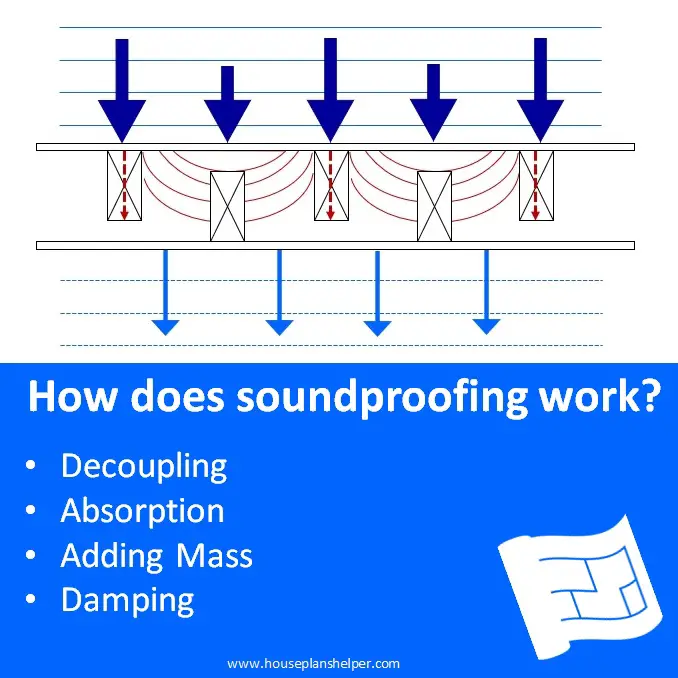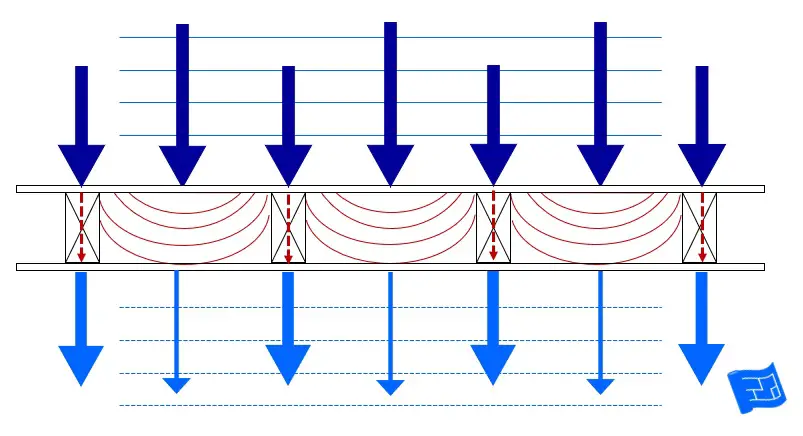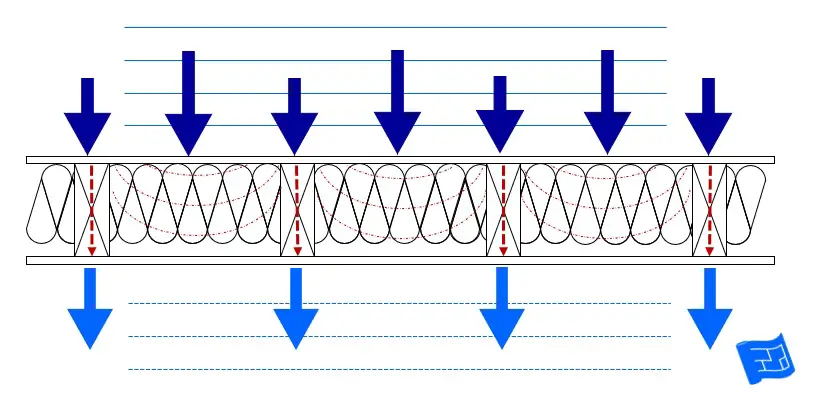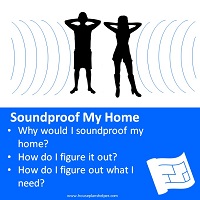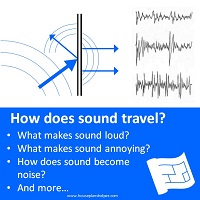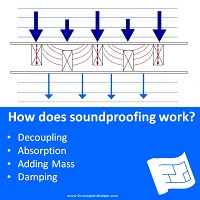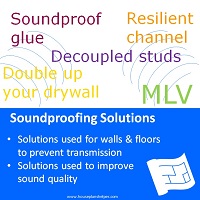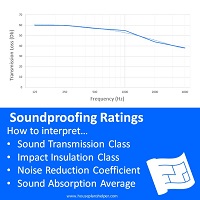- Home
- Soundproofing
- How Does Soundproofing Work
How Does Soundproofing Work?
So, let's answer that question - How does soundproofing work? It helps if you have some knowledge of how sound travels before you read this.
First of all, let's take a look at what happens in a standard wall.
Noise (dark blue arrows) hits the stud wall and is transmitted through the studs (red dotted lines) via structure borne vibration.
The red curved lines illustrate the sound that is being transmitted through the wall via airborne vibration through the cavity of the wall.
Now let's take a look at the four key methods that will answer our question 'how does soundproofing work?.
Decoupling
In 'how does sound travel?, we’ve talked about how sound can be transmitted through solid materials. In order to do this, there has to be some sort of material for the sound to travel through. If the path of material is interrupted, or decoupled, the sound vibration stops.
Do you remember the tin can telephone experiment? If the string is cut, it doesn't work - that's soundproofing by decoupling.
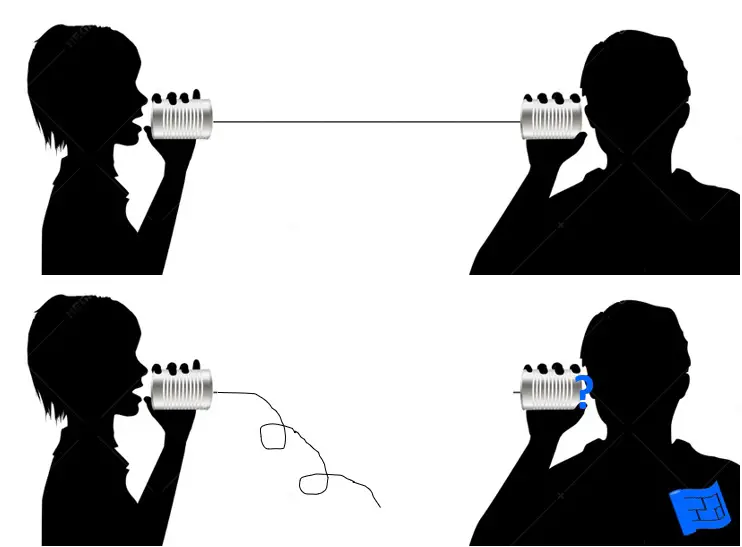
Here's a wall where the studs have been staggered. You can see how the structure borne transmission path through the studs (dotted red line) is interrupted resulting in reduced noise.
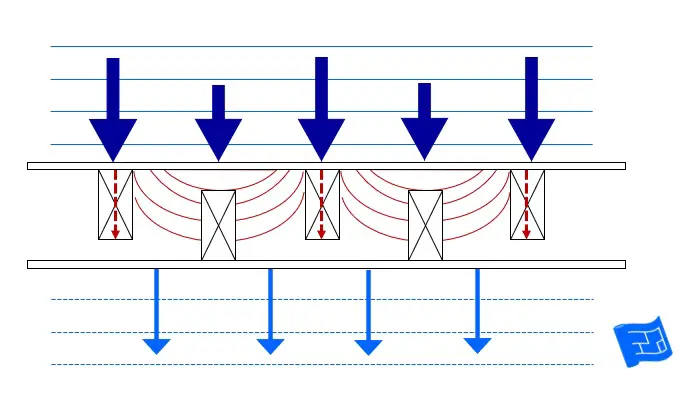 Staggering the studs introduces decoupling into the wall assembly, interrupting structure borne sound transmission
Staggering the studs introduces decoupling into the wall assembly, interrupting structure borne sound transmissionAbsorption
Sound reverberates in a space. Think about when you put a sea shell up to your ear. That’s trapped air resonating around the space. The same thing happens inside your stud walls, the sound from one side lands on the drywall and makes it vibrate, which makes the air in the cavity vibrate and in turn, the drywall on the other side vibrate.

Now if you were to wrap that sea shell in cotton wool, and
stuff it full of cotton wool, there wouldn’t be any sound of the sea – try it if
you have a shell.
Here's how the principle of absorption is used in a wall. Adding insulation (wiggly lines) into the wall absorbs the sound in the cavity of the wall, reducing reverberation and therefore reducing noise.
Add Mass
As mentioned above, for sound to travel through the wall, the drywall has to vibrate and pass these vibrations into the air and the studs. It’s much harder to make something thick or dense vibrate than something thin and light.
Take a coke can and you can make the sides move easily. Take a can of paint and the sides don’t move as easily – just because the metal is thicker.
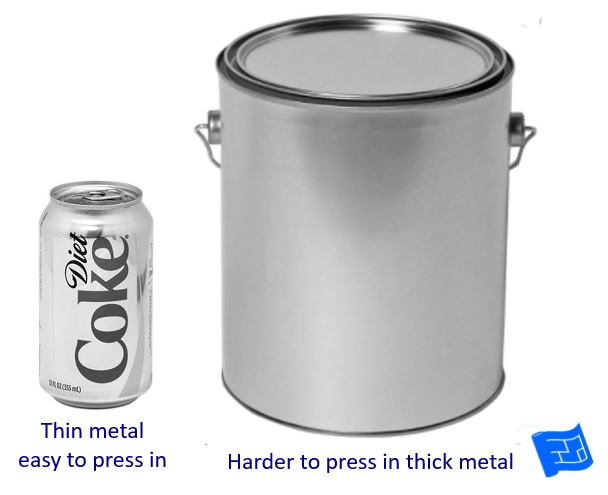
So the more mass that is in a wall, the better the sound insulation. Adding mass is a really good method of soundproofing and works well for low frequencies as well as high frequencies.
In a wall, this means adding an extra layer to one or both sides of the wall.
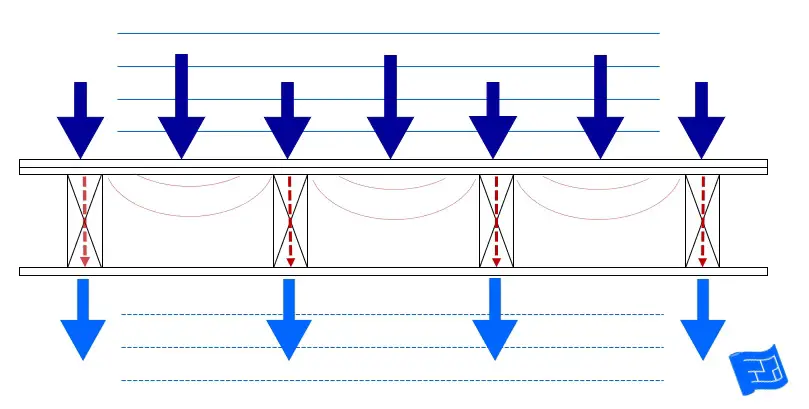 Adding an extra layer of drywall prevents the wall flexing and transmitting the airborne noise into the cavity of the wall
Adding an extra layer of drywall prevents the wall flexing and transmitting the airborne noise into the cavity of the wallDamping
Damping uses the absorption and dissipation behaviors of sound. Damping just means making the vibrations less by changing the sound into a tiny bit of heat energy.
Guitarists can use string dampeners to keep their guitars nice and quiet – it’s the same principle.
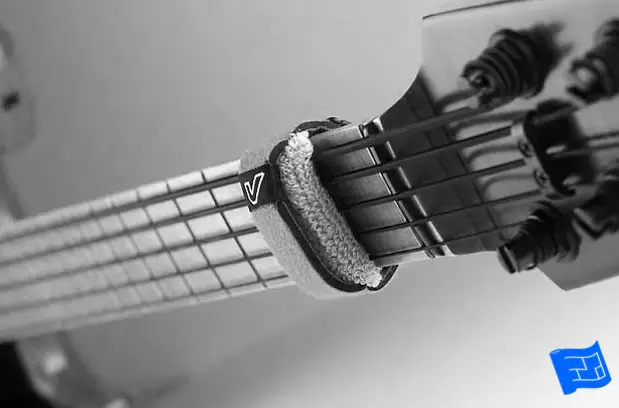
Here's what a damping solution looks like in a wall. A damping layer, or damping clips can be added. When the sound meets the wall, it is dissipated in lots of different directions. This reduces the amount of sound energy that transfers into the studs and the cavity of the wall.
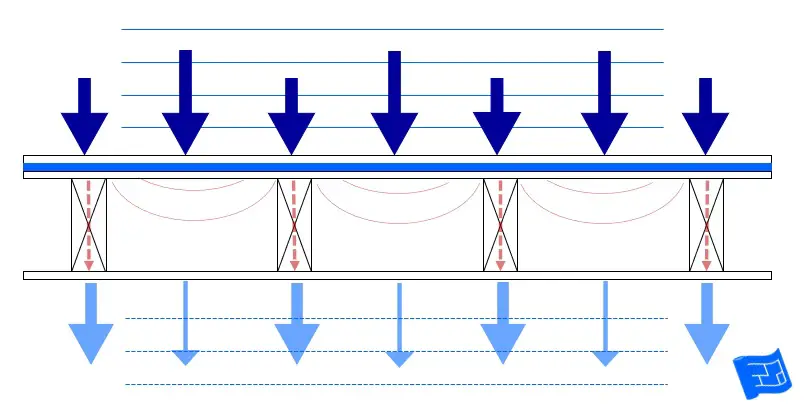 Adding a damping layer or damping clips dissipates the sound and decreases the amount of sound energy entering the studs and air cavity of the wall and therefore reducing noise on the other side of the wall.
Adding a damping layer or damping clips dissipates the sound and decreases the amount of sound energy entering the studs and air cavity of the wall and therefore reducing noise on the other side of the wall.How does soundproofing work in practice?
Usually it's a mixture of all of these soundproofing methods that are used and there are various soundproofing solutions available that use these tactics.
I hope that answers the question of how does soundproofing work.

